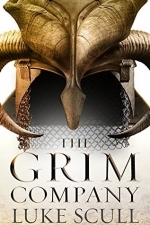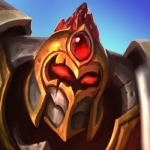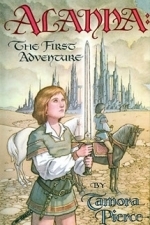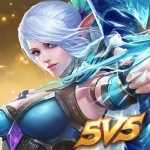
Mobile Legends: Bang Bang
Games and Entertainment
App
Join your friends in a brand new 5v5 MOBA showdown against real human opponents, Mobile Legends:...

Lantern (Danubian #1)
Book
In the black night, I alone uphold the shrine of the seven lantern gods. The year is 2448....
MM Paranormal Romance
Sensitivemuse (246 KP) rated The Grim Company in Books
Aug 27, 2018
It’s been a while since a good fantasy has come by my way and with anti heroes! It’s different and nice to see even though the world building and plot is typical fantasy but it’s written so well that it’s enjoyable and with some occasional funny parts you’re left with a memorable book and want to keep going in the series.
The world building is well done. Mages are dictators of their own cities and have the general populace under their thumb. Magic is pretty much only done by Magelords (not including the band of sorceresses that are mentioned). Dorminia is protected by Augmentors (elite units that have enhanced magical items) which is a fine idea. The mindhawks (birds that can read your mind to see if you’re thinking thoughts to overthrow the Magelord) is also a really neat concept that I liked.
The plot itself is intricate and it takes time to get fully immersed in it. Once you’re familiar with the world and setting it’s well worth the time invested and although it may be a bit hard to keep track of everyone at first, the action scenes are well written, the dialogue is real albeit vulgar at times (but it keeps it real), and the battle at the end is epic. Everything is somewhat interconnected and once the pieces all come together it makes for one great story.
The characters are a mixed bag and you have a variety to choose as a favorite. Cole seems to be the butt of many jokes despite his main role in the story. I found myself bursting out laughing at some moments that featured him - although I have to add, he’s not a very likable character. He’s naive, arrogant, and a bit of a dolt. But that’s what makes his role more interesting. Even I had to agree with Jerek when he said: “The boy’s a hero after all.”
My favorite would be Brodar and Jerek. Their background stories are interesting and they compliment each other. Brodar is the cool headed fighter who’s going on past his prime, whereas Jerek is the hot headed one that has a constant chip on his shoulder. They make a great duo and even while fighting together it makes for an exciting battle scene to read.
I sympathize with Barandas even though he was for the ‘bad guys’. He was loyal to a fault and was your model soldier. But he had a nice likable personality and although he was loyal to the Magelord you had to admire that in him. He’s good at his job and he was also trying to set things right. It made me sad on his demise. It was worth reading his one on one fight with Brodar.
There are so many questions to be answered! Lots of things were left hanging and I am looking forward to reading book two of this series. If you like a good fantasy with anti heroes with various flaws, some bits of dark humor, hefty battle scenes and blood coming from all over this is definitely for you.

Leap of Fate
Games
App
*** Minimum hardware: iPad 4, iPad mini 2, iPhone 5s. *** Leap of Fate is a furiously-paced...
Alice (12 KP) rated The Silver Tide (The Copper Cat, #3) in Books
Jul 3, 2018
The Silver Tide brought several running story arcs to a close nicely with just the right amount of action, drama and hate. Now I use the term hate lightly because it wasn’t hate from me but hate of some of the characters who originally I thought were good people – boy was I wrong.
The Silver Tide was the best title and I waited until right near the end to find out what the relevance of that was. Oh it was so good! I tweeted Jen Williams just before I got there grumbling because Sebastian was being abused in the book as a character and then I read the ending and my decision changed entirely.
This book had the same easy flow of dialogue and prose with character descriptions and world building in abundance – by world building, I don’t mean the standard Ede but a new “world” called Euriale where all sorts of weird and wonderful beasties and plants to die for – literally. This new world had some wonderful if slightly psychotic characters in it and there were pirates everywhere, several of those were psychotic as well.
The storyline for this book was based around Euriale and involved time travel, long dead gods and characters who have died and been reborn; Estenn a character who is half-mad at the beginning of the book and completely mad by the time Wydrin kicked her psycho butt is a new one, she’s entirely consumed by the Twins – Res’ni and Res’na – and believes herself to the their Emissary and it is because of Estenn that things happen in this book: good and innocent people die for her cause and Y’Gria followed by Y’Ruen, Res’ni and Res’na aid her in slaughtering the mages in a time gone by.
The ending, although sad because it ended, was brilliant. It was lovely seeing Sebastian finally get his happily ever after especially after the few disastrous attempts he made in the first two books – Oster and Sebastian I ship it. Dragon with dragon-kin oh yes! There was also a major overabundance of dragons and dragon-kin in this book and some pretty sweet new magical powers for Frith which was super.
Wydrin had her moments as always and this book was fantastically British in a lot of ways; including copious use of the words “fuck” and “mum” which I liked. I really can’t fault Wydrin Threefellows character in any way, shape or form and she went through some particularly freaky things in this book (when comparing the other books to this one, definitely freaky-deaky).
In all, this series was brilliant, it was a fantastic read all round and I’ve already got two people I know wanting to steal the series from me so they can read it on their own.
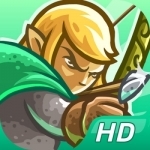
Kingdom Rush Origins HD
Games and Entertainment
App
***Best Mobile Game 2015 DICE Nominee*** The most addicting tower defense game returns in an...
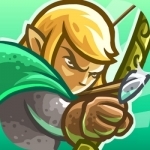
Kingdom Rush Origins
Games and Entertainment
App
***Best Mobile Game 2015 DICE Nominee*** The most addicting tower defense game returns in an...
Goddess in the Stacks (553 KP) rated Alanna: The First Adventure in Books
Apr 16, 2018
That complaint aside, the Alanna books are really the foundation that the rest of Tortall was built upon. It's interesting to see how Pierce has fleshed out some of the concepts she touched on in the Alanna saga, and it's fun to see where some of the things from the Beka Cooper trilogy originated. It also pays to keep in mind that though the Alanna books were written first, the Beka Cooper trilogy is based two hundred years earlier. We learn a lot more about the office of The Rogue in the Beka Cooper trilogy, something that isn't explained very well in the Alanna quartet, even though one of Alanna's main romantic interests is George Cooper (yes, a descendant of Beka!), the Rogue. Pierce also never explains the origins of Alanna's cat, Faithful, in the actual Alanna books. That explanation lies in the Beka Cooper books as well.
The Song of the Lioness quartet is the story of a girl who decides to rebel against tradition and follow her heart to become a knight. In her time, ladies simply do NOT become knights. They learn to organize households and marry well. Alanna, however, is lucky enough to have a twin brother who does not want to become a knight; instead Thom wants to be a mage. So when they're sent off to face their futures, they switch places, with Alanna becoming "Alan", the younger twin. (Thom stays Thom; the school that ladies are sent to is the same school mages start at.)
Alan/Alanna begins as a page, then moves to squire, and eventually a knight. Her secret is discovered, but due to her influential friends, most of whom knew she was a girl by then, she is able to keep her status. Her adventures take her from uncovering a plot against the royal family, to being adopted by a desert tribe, to recovering a magic jewel of prosperity, with many small adventures in between.
I love reading Pierce's heroines; both Alanna and Beka have problems reconciling their feminine natures with the work they've chosen. The scenes where Alanna's love interests see her in a dress for the first time, instead of her normal boy-garb and armor, is heart-warming in one case, and sad in another. In both womens' lives it's the man who can accept all of their aspects who ultimately wins their heart, which is a wonderful message.
Ultimately, the technical flaws in the writing of the Alanna saga faded as I became absorbed in the story. I'll be requesting more Tortall books from the library in the near future!
You can find all my reviews at http://goddessinthestacks.wordpress.com

Scene Speak
Education and Medical
App
Scene Speak is versatile customizable app that provides a framework on the iPad to create...
